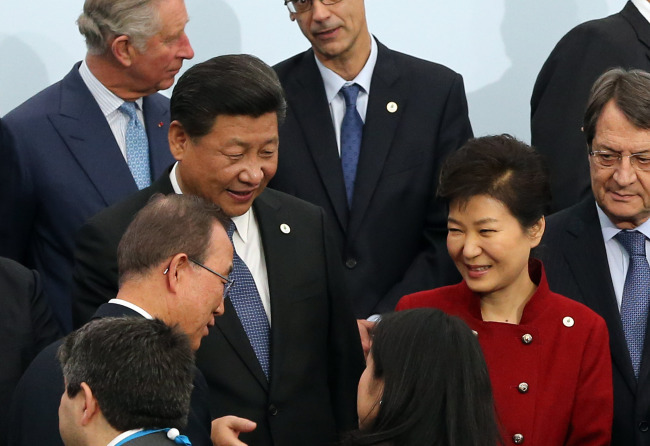Korea on Sunday entered into free trade pacts with three economies, including its largest trade partner and one of today’s major sources of global economic uncertainty ― China.
 |
(Yonhap) |
The FTAs with China, Vietnam and New Zealand are projected to bring to Korea an additional 1 percentage point in gross domestic product growth over the next decade through a $5 billion increase in annual shipments to the three markets.
“Global trade outlook is not good, but we hope the FTAs will serve as a much-needed springboard for our economy to take a new leap,” Prime Minister Hwang Kyo-ahn said Sunday.
China accounts for 26 percent of Korea’s exports as of October, with the figures for Vietnam and New Zealand standing at 5.3 percent and 0.2 percent, respectively.
The new FTAs came into force as Korea strives to reinvigorate its economy, which has in recent years lost its export-led momentum for growth in the face of weak global demand and a slowdown in China. Overseas shipments by a couple of big-time manufacturers such as Samsung Electronics and Hyundai Motor have been the main driver of growth in Korea.
The trade deal with China has immediately lifted tariff on 958 items, including home appliances, instant noodles and various other consumer products, with further elimination of tariffs and nontariff barriers being eyed.
Many Korean companies, particularly the retail companies, are jockeying to tap into the China market in order to gain an upper hand in the world’s most important consumer market with 1.3 billion population.
None here, however, seem to expect the FTAs to work magic and fix the local economy in the short term. Korea already has trade accords with the U.S., the European Union and a handful of other economies.
Challenges confront Asia’s fourth-largest economy on multiple fronts and many economists say the outlook for 2016 is murky, with the economy saddled with flagging exports, still-weak domestic demand, high household debt and low inflation.
“Exports will remain feeble and the contribution of domestic consumption to economic growth will weaken (in 2016),” LG Economic Research Institute, a Seoul-based think tank, said in a report Sunday. It said the economy would expand 2.5 percent next year, down from its earlier forecast of 2.7 percent.
The forecast is lower than the Korean government’s projection of 3.1 percent and the Bank of Korea’s 3.2 percent.
Korean policymakers took relief, however, when Moody’s Investors Service raised the rating for Korean debt to “Aa2,” the third-highest level, from “Aa3” on Saturday. That is the highest-ever rating given to Korea and one step above China and two above Japan. Standard & Poor’s and Fitch Ratings both rank South Korea at “AA-,” the fourth-highest level.
“Moody’s decision to upgrade shows South Korea’s international creditworthiness differentiates it from other nations on the back of solid economic fundamentals and amid emerging-market instability,” the Finance Ministry said in a statement.
By Lee Sun-young (
milaya@heraldcorp.com)





![[Herald Interview] 'Trump will use tariffs as first line of defense for American manufacturing'](http://res.heraldm.com/phpwas/restmb_idxmake.php?idx=644&simg=/content/image/2024/11/26/20241126050017_0.jpg)


